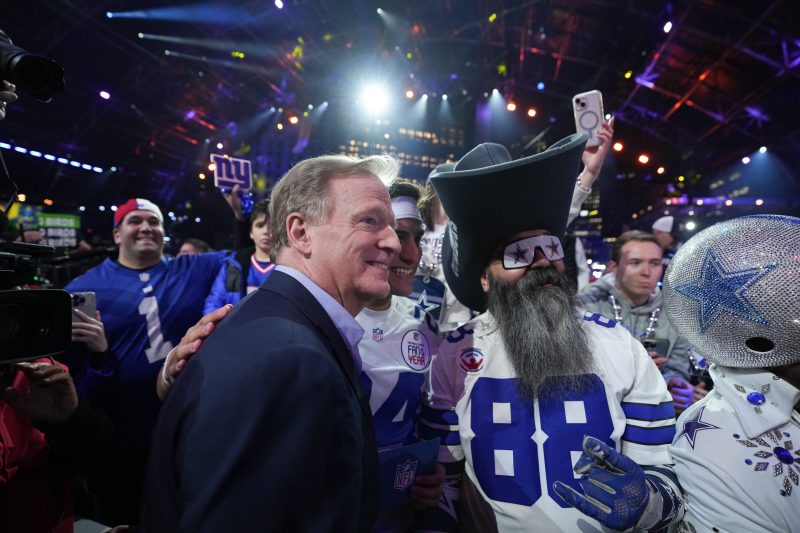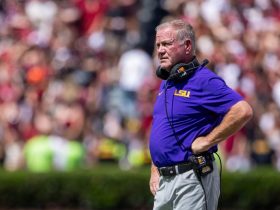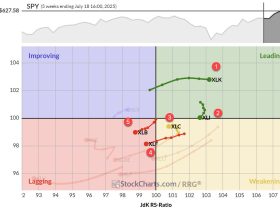Way back in 2010 – before the lockout, Deflategate, Colin Kaepernick, COVID-19 and Patrick Mahomes’ third Super Bowl triumph – Roger Goodell huddled with NFL owners and revealed an ambitious financial target.
The NFL commissioner declared his goal for league revenues to hit $25 billion by 2027. At the time, the NFL generated around $8 billion in annual revenues.
“I thought then, it certainly put the carrot out there,” Dallas Cowboys owner Jerry Jones reflected for USA TODAY Sports last week as NFL owners wrapped up meetings in Nashville. “But he was more right than he was wrong.”
Andrew Brandt remembers. The former Green Bay Packers executive, a foremost authority on NFL financial matters, shrugged at the thought that the league could increase its revenues by roughly $1 billion per year. “Goodell doesn’t say anything without it being backed up somewhere,” Brandt told USA TODAY Sports.
Fast-forward to now. Goodell’s $25 billion goal is undoubtedly in reach. Jones said, “We’re almost there. Could exceed it.”
NFL STATS CENTRAL: The latest NFL scores, schedules, odds, stats and more.
Although the NFL won’t publicly divulge the figures, it is believed that annual revenues have surpassed $20 billion, which coincides with a $30 million rise in the salary cap to a record $255.4 million per team in 2024.
How Netflix deal will boost NFL
The next frontier for growth – and seemingly a slam-dunk for striking Goodell’s goal – was undoubtedly reflected with the three-year agreement the NFL recently struck with Netflix to carry games on Christmas. The NFL fetched $150 million from the streaming giant for the two premium Christmas matchups this year, featuring the Kansas City Chiefs at Pittsburgh Steelers and the Baltimore Ravens at Houston Texans.
No, the networks that have carried NFL games for decades (CBS, Fox, NBC, ESPN) can’t be thrilled to lose big games to a new player such as Netflix. Yet, as Brandt points out, the league has again capitalized on a non-traditional opportunity while continuing to grow traditional sources such as gate receipts, sponsorships, merchandising and stadium revenues.
Rather than collect rights fees for season-long packages, the NFL (with 93 of the top 100 highest-viewed programs in 2023) has demonstrated muscle in that it can parcel out compelling matchups placed in desirable programming windows. That has been illustrated, too, with Amazon Prime ticketed for a game for the second consecutive year on Black Friday.
“This will not be the last Netflix deal,” Brandt said. “The next one will be bigger.”
Beyond the immediate impact on the bottom line, the Netflix agreement underscores the options looming for the league if it decides to opt out of its existing media deals in 2029, which seems like a no-brainer at the moment. The NFL struck its existing broadcast deals in 2021 for $113 billion over 11 years but can opt out after seven years.
“My reaction at the time was, ‘What a windfall, what a boon for the NFL,’ ‘ said Brandt, executive director of the Moorad Center for the Study of Sports Law at Villanova. “The way we look at it now, it’s the networks that got the bargain.”
While Netflix is not expected to pursue live sports on a grand scale involving a season-long slate, its new presence in the NFL landscape, following Amazon Prime, sets the stage for more streaming platforms to align with the NFL. Sure, if the NFL opts out of its existing media deals, it can renegotiate. Yet the conditions could be significantly different.
Brandt mentions Apple TV as a prospect; Jones envisions the possibility of a platform that is not currently on the radar using the NFL to build its business in the coming years, as Fox did when it won NFL rights in the 1990s.
Growing the game internationally
Goodell, weighing the significance of the Netflix deal, alluded to an apparent balancing act that involves traditional viewing patterns, streaming, mobile devices and audience adaptation. The Netflix distribution is critical, too, to the NFL’s strategies for growing the game internationally.
“It’s a reflection of the changing media landscape,” Goodell said. “The reality is, it’s changing before our eyes.”
Goodell said the league’s philosophy hasn’t changed when it comes to having games available on free TV in the markets of the two teams playing in a given matchup. Yet Netflix, he added, has nearly 300 million global subscribers.
“We are obviously focused on becoming more global,” Goodell said. “So that’s a huge benefit to us.”
The NFL, which has staged games in England, Germany and Mexico for years, will play its first game in Brazil this year, featuring the Green Bay Packers and Philadelphia Eagles. In 2025, the NFL will stage a game in Spain. And Australia is among countries being evaluated for future sites.
‘Be everywhere our fans are’
Yet even with the NFL increasing its international footprint, the streaming connections could provide the most robust growth opportunity.
“All of the streaming platforms have allowed us to reach a younger average audience age – another very important factor for us,” Goodell said. “There are several people who are fans of the NFL who aren’t on pay systems anymore because they are changing. People are leaving in some cases, but we’re still committed to those platforms. Our job is to be everywhere our fans are …
‘For us to be the first sport that Netflix is invested in to bring to their subscribers, I think is a statement about our content and the potential opportunity between the two.”
What’s that mean for the NFL fan? Depending on an individual’s appetite, a fan could wind up spending nearly $1,000 per year on various packages and streaming to ensure a heavy dose of NFL games.
Of course, if a fan already subscribes to Netflix ($6.99 per month, with ads), Amazon Prime ($14.99) and YouTube TV ($72.99), the cost is built in. Yet that depends on the individual. A season subscription to NFL Sunday Ticket is $349 for YouTube TV subscribers.
Jones, of course, downplays the costs to fans.
“The availability of our games are the most economical of any programming,” contends Jones, who owns the world’s richest sports franchise, valued by Forbes at $9 billion. “If they don’t want to buy something, they can see more of it for free than with any sport there is.”
Yet some games aren’t free, and it will be interesting to see the patterns in the coming years as the $25 billion goal approaches. Peacock paid the NFL $110 million to carry a first-round AFC playoff game between the Chiefs and Miami Dolphins in January. It drew an average of 23 million viewers and reportedly brought in 2.8 million new subscribers ($5.99) – with 71% remaining subscribed nearly two months later. Amazon will get a playoff game next January at a cost of $120 million.
And just think: The NFL has had multiple rounds of layoffs and buyouts of staff in recent years and undergone significant cost-cutting measures with the NFL Network. All while barreling toward the hardly magical goal of $25 billion in revenues.
Goodell is quite the prophet. As in profit.







